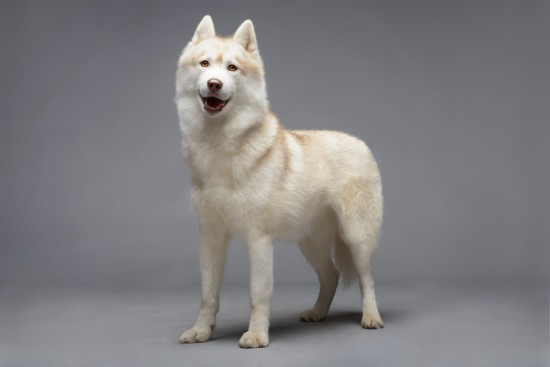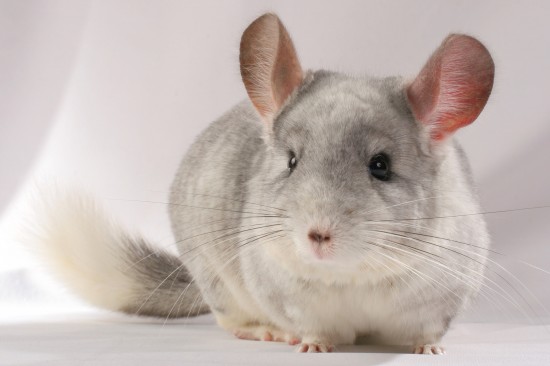

Genetics is the science of animal heredity and the study of how traits and characteristics are transmitted from generation to generation. It is a complex subject, but a good understanding by breeders is important as the correct knowledge may help prevent the breeding of unsuitable animals and unhealthy offspring.
Recessive genes (genes whose effects are masked by that of their allelomorphic partner). Recessive genes are often unwanted, and therefore identification of animals heterozygous for a recessive gene means that breeding from such animals can be avoided. Identification of a recessive carrier can be established by means of test mating to a homozygous recessive animal or a known heterozygous recessive carrier. Homozygous describes an animal's genes when both allelomorphic partners are the same (i.e. identical alleles in regard to a given characteristic), whilst heterozygous describes an animal's genes when the allelomorphic partners are dissimilar.
Deoxyribonucleic acid. DNA governs the activities of the cytoplasm and is the material controlling heredity from parents to offspring. DNA is a double stranded molecule; each strand consisting of 2 long complementary chains held together by base pairs. This type of structure is known as a double helix. Genes are made of DNA.
Chromosomes are special structures within the nucleus that control the cell. They contain chromatin fibres that hold the genetic information. Domestic dogs possess 78 chromosomes (38 pairs of autosomal chromosomes and 2 sex chromosomes).
A mating to a homozygous recessive animal or a known heterozygous animal. A backcross to the recessive mating is used to reveal the presence of a recessive gene in an individual whose phenotype is the same as an animal homozygous for a dominant gene.
This term is used when describing a test mating, and refers to the offspring produced by the parent generation. The first filial generation may be abbreviated to the F1 generation. The F2 generation are the offspring produced by the F1 generation.
Gregor Mendel (1822-1884) was an Austrian monk and biologist who discovered genes. His first law states that genes exist which influence characteristics. They exist in pairs and retain their identity from generation to generation (i.e. alleles separate to different gametes). Mendel’s second law state that each pair of alleles separates independently of every other pair of alleles.
Gene mutation; which may occur when the sequence of base pairs is repaired in a different sequence following damage to a chromosome at the site where the gene is located. Gene mutation is not always disadvantageous, since a slight mistake in gene structure may provide another means by which offspring can differ from the parent generation. Lethal mutations however are a different matter, and here the gene fails to duplicate exactly and is thus unable to function resulting in the death of the individual.
Linkage; which describes 2 pairs of genes occurring on the same chromosome, which do not assort independently.
Multifactoral inheritance describes a characteristic which is influenced by a number of genes, rather than 1 gene or its alleles. An example is hip dysplasia – where a number of genes interact with themselves and the environment.
A genotype is defined as the genetic constitution of an animal as received from its parents. A phenotype is the outward physical appearance of an animal (e.g. colour or coat type).The genotype may be different from the phenotype due to the presence of recessive genes.
Congenital defects are present at birth and may be inherited or due to environmental factors. Inherited defects may not be evident until some time into the life of the animal. An example of a congenital defect is cleft palate.
Selective breeding between close family members in order to increase homozygosity and thus fix desired characteristics.
A mating within a family maintaining a relationship with a particular ancestor in order to preserve desired characteristics.
Outbreeding which increases heterozygosity and introduces new genes into a population. Outbreeding masks the effects of recessive genes and results in better offspring since undesirable recessive genes are not expressed.
The offspring of an outcross will not breed true since they are heterozygous and not homozygous for their alleles.
The result of a cross conveying superiority on the heterozygote (i.e. increases vigour when the parents come from different strains or species).
Epistasis describes the suppressive effect of some genes expressed upon other genes which are not their alleles. This is seen in albino animals which are homozygous for a recessive gene c which prevents coat colour from being expressed. A cc animal will be albino irrespective of any other coat colour genes it may possess.
Sex linked genes are located on the sex chromosomes. There are many more genes on the X chromosome than on the Y chromosome and thus sex-linked genes are more likely to be located on the X. One important disease controlled by sex-linked genes is haemophilia. Sex limited genes are genes that can only be expressed in one sex, such as those associated with the volume of milk production. The gene is present in both the male and the female, but is only expressed in the female.
 All About The Catahoula Leopard Dog Breed
All About The Cat
All About The Catahoula Leopard Dog Breed
All About The Cat
 How to Choose a Cat for Your Family?
How to Choose a Cat for Your Family?
Have you
How to Choose a Cat for Your Family?
How to Choose a Cat for Your Family?
Have you
 How Safe Are The Treats You Offer Your Pet?
How Safe Are The
How Safe Are The Treats You Offer Your Pet?
How Safe Are The
 Fun & Interesting Facts About Chinchillas
Fun & Interesting
Fun & Interesting Facts About Chinchillas
Fun & Interesting
 Chipmunks - A Beginner’s Guide
Chipmunks - A Beg
Chipmunks - A Beginner’s Guide
Chipmunks - A Beg
Copyright © 2005-2016 Pet Information All Rights Reserved
Contact us: www162date@outlook.com